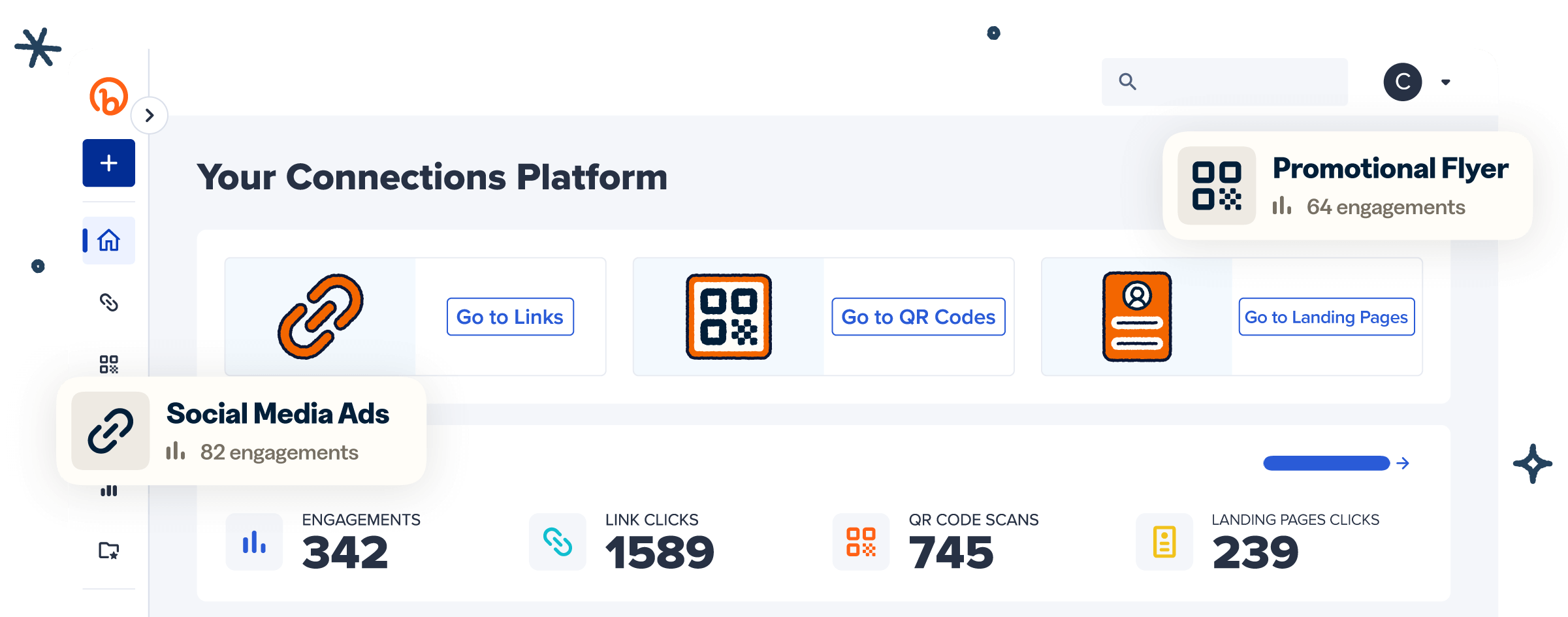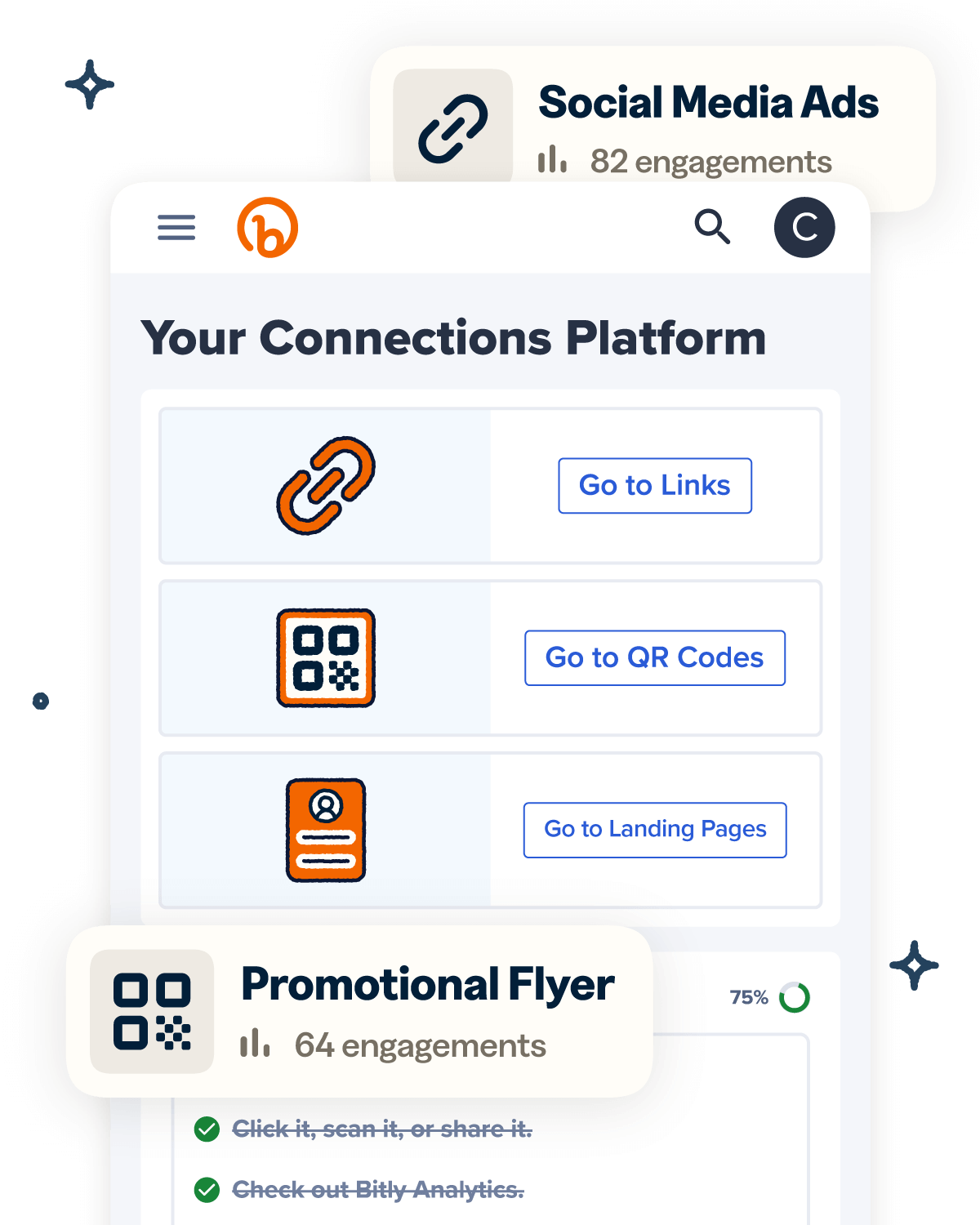Digital business cards are taking over the networking game, and it’s easy to see why. They’re sleek, eco-friendly, and live right on your smartphone, making it easy to share your contact information anytime, anywhere.
But a lot of users overlook one of the biggest benefits of digital business cards: built-in analytics that allow you to track who’s engaging with your card and how. That’s measurable data in your pocket, giving you the edge to network smarter, not harder.
Whether you’re a solopreneur or a sales pro, these insights can transform how you connect and follow up with potential clients. Ready to see how? Get the whole scoop below on how digital business cards work.
Note: The brands and examples discussed below were found during our online research for this article.
What are digital business card analytics?
Digital business card analytics is the data you get from tracking how people interact with your virtual card. Think of it as a behind-the-scenes peek at how many people are scanning your QR Code, tapping your NFC tag, or clicking your links, and even their locations and the devices they’re using to do it (Android or iOS).
For professionals and businesses, this data is gold. It turns a simple exchange into a treasure trove of insights, helping you measure your networking impact and fine-tune your lead generation approach.
Why analytics matter for digital business cards
Ever handed out a stack of paper business cards at an event and wondered whether anyone will actually keep them? Digital business cards with analytics are your answer.
They don’t just sit in someone’s wallet (or the trash). They tell you a story—and make a great first impression. Analytics bridge the gap between tossing your physical card into the wild and understanding its real-world impact. Here’s why they matter:
Measuring networking ROI
Networking can feel like a gamble—chatting at events, Zooming into virtual conferences, or firing off emails with your digital card attached and hoping for the best. But with analytics, you’re not guessing anymore. You can track how many scans or views come from each effort in real time, giving you a clear picture of your return on investment (ROI).
Did that trade show booth get 50 scans from new contacts, while your LinkedIn post only snagged five? Now you know where to double down. This data helps you make smarter decisions about where to allocate your time and resources, ensuring that your networking efforts are aligned with the highest-return opportunities.
Instead of spending energy on low-impact strategies, you can focus on what truly drives engagement and results.
Targeting follow-ups or sales efforts by finding high-engagement areas
Ever wonder where your network’s buzzing the most? Location-based analytics from your digital business card can reveal where engagement is coming from, allowing you to pinpoint areas with the most interest in your offerings.
Armed with this insight, you can tailor your follow-up strategies and prioritize sales efforts in those high-engagement regions, ensuring you’re focusing your energy where it matters most. This localized approach helps you build stronger relationships and increase the likelihood of successful conversions.
Optimizing your sharing strategy
Effective networking takes strategy, and not every way you share your digital business card will be a home run. Analytics reveal which methods or channels are hitting it out of the park. Maybe your QR Code on a conference flyer is racking up scans, while your email footer is a ghost town. Or perhaps a LinkedIn post outperforms a website embed by a mile.
These insights let you ditch what’s flopping and lean into what’s clicking. By focusing on what works best, you can refine and streamline your distribution approach, boost results, and make every share count.
Key metrics to track (and what they mean)
So, you have analytics at your fingertips—now what? It’s all about knowing which numbers to watch and what they’re telling you. Tracking the right metrics turns your digital business card into a powerhouse of actionable intel. Below are the must-know metrics that will help you level up your networking game (and they’re nearly all included in Bitly Analytics!).
1. Views or number of scans (QR Code or NFC)
First up: How many people are actually seeing your card? Tracking total views (QR Code scans or NFC taps) gives you a baseline read on your reach. It’s the starting line for gauging interest: 50 scans after a meetup means your card’s getting noticed, while a lone tap might signal it’s time to rethink your pitch. This metric is your quick pulse check on how far your digital handshake travels.
2. Traffic sources
Next, where is your crowd coming from? Traffic source data shows whether they’re finding you via a tweeted link, an email blast, or a direct QR Code scan at an event. Maybe Instagram is your golden ticket, or your newsletter is the quiet MVP. Knowing this helps you double down on the channels that deliver, tweaking your sharing plan to keep the momentum rolling.
3. Scans by location
This metric tells you where your digital business card is making waves. Tracking scans by location lets you see if your card is getting more attention in certain cities or countries. It’s a goldmine for understanding geographic engagement trends, especially when tailoring your outreach.
Are most of your scans coming from New York? Maybe it’s time to launch a targeted campaign there. By focusing on where the buzz is happening, you can tailor your approach and ensure you connect with the right people in the right places.
4. Referrer data
Have you ever wondered which platforms or sources are driving traffic to your card? Referrer data answers that question. It shows where your visitors are coming from, whether it’s social media, email marketing campaigns, or links from a partner’s site.
This insight helps you pinpoint which distribution channels are performing best, allowing you to optimize future outreach strategies. Whether it’s a guest blog post, a podcast mention, or a tweet, knowing your best referrers helps you maximize the impact of your promotional efforts.
5. Clicks on specific links
What’s grabbing attention on your card? Tracking clicks on links—like your website, LinkedIn, contact info page, or booking page—tells you what’s resonating. If your portfolio is getting love but your email CTA is ignored, you know what to focus on. It’s like a cheat code for determining what your audience cares about most, and that’s your ticket to give your audience exactly what they’re looking for.
6. Saves or business card downloads
When someone saves or downloads your card, that’s a step beyond a casual glance—it’s intent. This metric shows who’s serious about connecting later.
A handful of saves from a conference could mean hot leads worth chasing, while zero downloads might nudge you to rethink your value proposition. Remember, the more saves or downloads your card gets, the more likely your contact will reach out or remember you when the time is right.
To monitor this metric (and more!), just use Bitly to create a UTM link, then track it using Google Analytics. You can find a Google Analytics integration, along with dozens of connections to other popular business tools, in the Bitly Marketplace.
How to use digital business card analytics effectively
Analytics aren’t just numbers to stare at—they’re your playbook for winning at networking. Used right, they’ll sharpen your follow-ups, help you polish your card design, and boost your results. Here’s how to put them to work:
Refine your card design or content based on link click trends
Your digital card’s design and content play a significant role in engagement. If analytics show that certain links or sections of your business card are getting a lot of clicks, consider emphasizing those areas in future updates to your card.
Maybe your portfolio link gets a ton of traffic, indicating a strong interest in your work. Or perhaps people are clicking on your scheduling link, suggesting you should make booking even easier. This insight helps tweak your messaging and content, creating a more impactful and user-friendly experience.
Test different versions of your card for A/B performance
Why guess what works? Run A/B tests with different designs, layouts, or calls-to-action (CTAs), then let the analytics settle it.
Did version A, with the bold, eye-catching headline, get more clicks than version B, with the minimalist approach? Or did the CTA in version A drive more traffic to your booking page than in version B?
A/B testing lets you evaluate one element at a time to identify what truly resonates with your audience. With data in hand, you can refine your card’s design and content to maximize engagement and make every interaction more impactful.
Track effectiveness of different distribution methods
Email, social, in-person—how you share your digital business card solution matters. Compare analytics across channels to see what’s bringing in the scans. If handing out QR Codes at meetups crushes it, but your email signature is underperforming, you’ll know where to focus your efforts.
Each contact sharing method has its own strengths, and tracking the results lets you double down on what works while refining or cutting back on what doesn’t. Armed with hard data, you can tailor your approach and boost the effectiveness of your networking strategy.
Measure the performance of your digital business cards with Bitly
Digital business card analytics are your ticket to networking smarter. Unlike traditional business cards, they let you measure engagement and perfect your strategy with actual data. But you’ll need the best digital business card platform to make the most of your strategy.
The Bitly digital business card, which is fully customizable within Bitly Pages, provides an easy and powerful way to track performance and engagement: Bitly Analytics.
With Bitly Analytics, you get the full rundown on key insights like the total number of scans, where those scans are coming from (city or country), and which referrers drive the most traffic, all in one place. This data empowers you to make smarter decisions and optimize your networking efforts.
Elevate your digital business card game. Create a Bitly account and start tracking your way to sharper contactless connections today.




